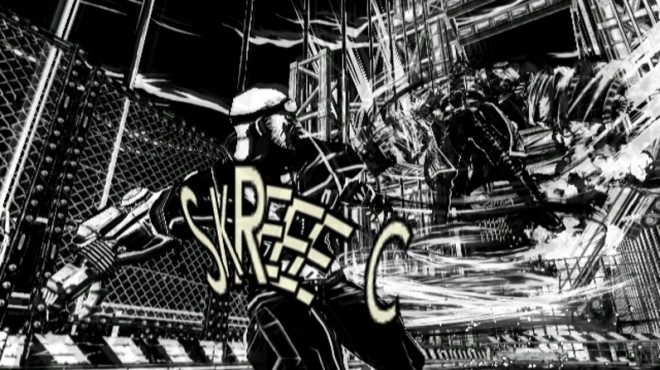Elements in Games
As described in the Art of game Design by Jesse Schell, there are four basic elements that form a game. As a games developer you must understand how to use each of these four elements; these elements consist of the game’s Mechanics, Story, Aesthetics and Technology.
First off, lets explain the mechanics. They are known as the procedures and rules of the game, your mechanics will dictate the role of your game – this’ll determine what players can or can’t achieve throughout gameplay. This is arguably the most important part of the elements, as mechanics are required to discern a game between other mediums of media as described.
“If you compare games to more linear entertainment experiences (books, movies, etc.), you will note that while linear experiences involve technology, story, and aesthetics, they do not involve mechanics for it is mechanics that make a game a game.”
Jesse Schell, The Art of Games Design (2008)
An example of how mechanics would be provided in a game could be how the player can take advantage of several power ups. The Mario Bros series has been known to introduce a wide variety of powerups that can change up gameplay as shown in Figure 1, these are able to give the player certain advantages such as extra firepower or agility. Although a typical mechanic, it can provide new and fun playstyles that the player can experiment with, this is a good mechanic as the different advantages each powerup provides will incentivize the player to try and find them throughout gameplay. I think that this gives the game a sense of variety, even though the gameplay is simple and easy to learn it provides a new edge for players to master.

The next element up would be the story, which is the sequence of events that unfold within your game. Some games tend to be mostly linear and pre-scripted, however others can be more branching and emergent. While telling a story you have to tell it through your game by making use of it’s mechanics.
“When you have a story you want to tell through your game, you have to choose mechanics that will both strengthen that story and let that story emerge.”
Jesse Schell, The Art of Games Design (2008)
An example of how a story can be provided within a game would be giving the player different options of dialogue to choose, this is typically found within RPG such as Deus Ex in Figure 2. As well as helping convey the game’s story, it will also help personalize the player’s character to fit who they want to be. This generally helps make the game feel more immersive and to give the player the feeling that their actions can have true weight to them.

Another important element of a game would be its aesthetics, this is how the game is visualized to the player. It is considerably important as it has the most direct relationship to the player’s experience. Not only would this cover looks, but sounds and many other features as well, choosing the right aesthetics for your game can help reinforce the other elements of the game and make the players feel that they are in the world that the aesthetics have defined. I feel like this is one important way to present a story to the player, having direct interaction with the story makes it stand out from other media.
“When you have a certain look, or tone, that you want players to experience and become immersed in, you will need to choose a technology that will not only allow the aesthetics to come through, but amplify and reinforce them.”
Jesse Schell, The Art of Games Design (2008)
An example of how the aesthetics provided in a game can help enhance it would be the grimy comic book art style present in Madworld. Not only does the game look authentic to the style its based on, but many of the mechanics and actions tied to the game will also make use of the style. As shown in Figure 3, an action being performed by the player has text pop out as if it were an an action in a comic book – Not only does this make the game more true to the style but I also think it provides a much more immersive and unique experience.

Last of all would be the element of Technology. The technology of a game enables the possibilities of doing certain things and prohibits it from doing other things. This is the medium in which the story, aesthetics and mechanics take place. Typically, the technology of a game can be innovative, as described by Jesse Schell, the technology for space invaders was designed for the game.
“It was the first video game that allowed a player to fight an advancing army, and this was only possible due to the custom motherboard that was created for it. An entirely new set of gameplay mechanics was made possible with this technology. It was created solely for that purpose.”
Jesse Schell, The Art of Games Design (2008)
As a games developer, it is important to consider these elements. I personally like seeing games try out many different and unique mechanics, games stand out to me because of the interactions they provide unlike any other piece of media. I feel like it may be important to analyse many of these as it will be important to consider when developing games in the future.
Bibliography:
Lifeofturner.blogspot.com. 2014. Ranking The Mario Games: The Power-Ups. [online] Available at: http://lifeofturner.blogspot.com/2014/05/ranking-mario-games-power-ups.html [Accessed 14 October 2020].
Zao, R., 2013. Blog 572: Deus Ex. [online] Rao Dao Zao. Available at: https://raodaozao.net/2013/11/10/blog-572/ [Accessed 14 October 2020].
PlatinumGames Inc. Official WebSite. 2009. MADWORLD | Platinumgames Inc. Official Website. [online] Available at: https://www.platinumgames.com/games/madworld?age-verified=a77a7ff3b2 [Accessed 14 October 2020].